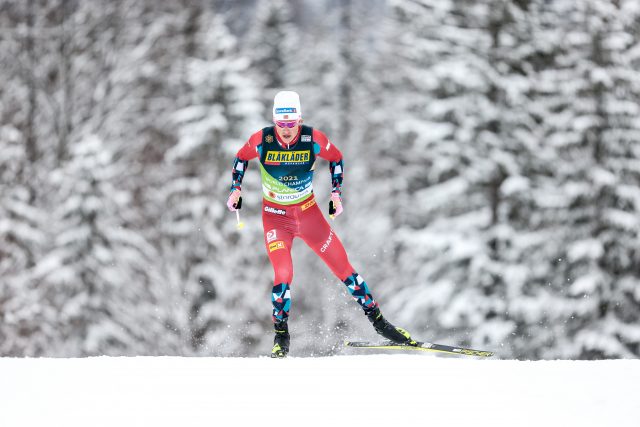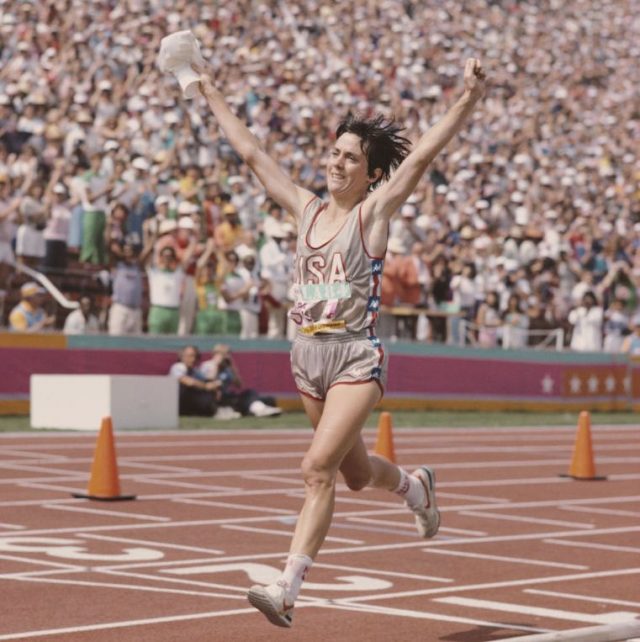
Injuries are inevitable . . .
As a physical therapist, I am often preaching prevention through maintenance exercises and training strategies; however, despite very well intended plans, injuries can still happen. Some of these will be short term, quite manageable, and maybe just a product of bad luck. Other injuries are longer lasting, will likely require some medical management, and are certain to impact training, whether from an acute trauma or from symptoms that have become progressively worse due to overuse/training error. The cool thing is, given the right conditions, the body will heal.
But what are the right conditions for healing? How do I heal faster? When do I know when to resume training? These are questions I get every day in the clinic. I certainly don’t have all the answers, but I’ve compiled a list of what I generally advise patients.
What is pain?
First off, I think it’s helpful to be reminded of what, exactly, is pain? Simply put, pain is a defense mechanism to keep us from harming ourselves. If you put your hand on a hot burner, the body’s response is pain so you take your hand away before it burns. Remember that like all animals, our body’s primary objective is survival (arguably procreation as well, but I’m not going there). Our bodies have a multitude of regulatory systems meant to aid us in homeostasis and survival. When there is an injury, and especially the subsequent inflammatory response, the nerve receptors in the area send a warning signal to the brain which we interpret as pain and thus respond in a way that protects the injured area. But the severity of pain is not always commensurate with the degree of injury. A paper cut hurts like hell, but it’s not going to kill you. Also, the paper cut will stop hurting before the skin has fully healed. The hypothesis is that the body is familiar with the paper cut, no longer sees it as a threat or concern, and stops interpreting the nerve signal as pain (unless it meets lemon juice and the body feels threatened all over again). All of this would seem to indicate that some pain, especially when chronic in nature, does not actually represent a fragility or active threat. This doesn’t mean that we disregard it, but it doesn’t mean that we bow down to it, either.
Pain can be a guide to training and activity; it doesn’t need to be a contraindication. Typical guidelines will say that pain less than 4/10 (0 is no pain, 10 is going to the emergency room screaming for mercy) that goes away or returns to baseline within two hours of exercise or activity is totally reasonable. It’s a green light, keep on going. Pain in the 4-5/10 range, or lower grade pain that is taking longer to calm down, is a yellow light: you really shouldn’t go through that intersection, so back it off a bit. Pain 6/10 or worse is a red light.

Inflammation gets a bad rap
We often blame inflammation and the associated swelling and pain as the cause of our problems; however, the inflammatory process is the way our body deals with injuries (and pathogens). The long-held treatment strategy for acute injuries is RICE: Rest, Ice, Compression, and Elevation. This is often paired with anti-inflammatory medications like ibuprofen. This treatment may provide some short-term pain relief—rest means you’re not using it so it’s less likely to be painful, icing numbs the injured area, compression and elevation may decrease swelling and some associated pain, and NSAIDs suppress the pain signal in the nervous system; however, there is mounting evidence that it can hamper appropriate healing in the long term. While we still want to manage pain, the treatment approach is shifting towards early movement with progression back to activity as symptoms dictate. There are certainly caveats to this: I am not endorsing walking on a broken leg or running on a newly sprained ankle—follow your medical provider’s advice.
For long-duration chronic issues, the thought process is a little different: at the anatomical level, we often think of chronic injuries, especially tendinopathies, as a failure of the inflammatory process to fully address the issue. My local streets are full of potholes. In the summer, the street crews patch them with asphalt. In the winter, the snowplows blow out these repairs. Every spring, the potholes are back. This is my analogy for chronic tendon issues: when we sleep the body does a quick, half-assed repair job (patching the pothole) then when we load the tendon the next day, we blow out the repair (the snowplow). What we really need is for the street to be repaved and for the body to appropriately heal the tendon. The street gets repaved when the mayor’s office is tired of the nosey neighbor complaining to City Hall every day. The tendon gets healed when we get the body’s attention through specific exercises. While there may be a role in the use of anti-inflammatories and injectables, the research in favor of exercise treatment is pretty compelling. Again, talk to your medical provider, especially one of my friendly colleagues in physical therapy.
Focus on what you can do, not what you can’t
It may be that your symptoms with activity/training are duration- or intensity-dependent; by modifying these variables, you are able to continue at least at some level. Depending on the severity and acuity of the injury, your body may not be in a place to absorb the stimulus of high intensity training. If it is too concerned with survival and homeostasis, it will behave much the same as if you are sick or overtrained: do all the intervals you want, but you’re unlikely to see progress and more likely to see your fitness decline. It may be that an activity (running is likely the first thing that comes to everyone’s mind) is simply not doable and you need to look for alternatives. Cycling, swimming (love it or hate it, but there’s very good carry over to XC skiing), SkiErg, paddle boarding, hike up/chairlift down are all potential alternatives that can still get your heart rate up, get you outside, and keep pain levels in the green light range. Specificity of training is certainly a good thing, but it’s not the only thing. There are lots of ways to get stronger and more cardiovascularly fit. Look at your injury as a way to try new things, master a different skill, and have fun.

Be nice to yourself
It may feel like your body has betrayed you, but it really is trying to do its best. Treat it with kindness. You don’t have a good knee and bad knee, you have a right and a left. Working through an injury is like powering up that last hill or getting the bell lap when you really just want to puke: they all take self-motivation, self-encouragement, and self-respect (notice the self- theme here). Sleep is a powerful drug. Don’t overdose, but maybe take more than normal (at least 8 hours/night). Eat well and eat wisely. A muscle injury will appreciate more protein. A healing bone will enjoy more calcium. There is a strong tendency to cut back on calories when an injury is preventing normal training volume; however, your body still needs fuel to heal. I am a big fan of acupuncture (disclosure: my wife is an acupuncturist). While the supporting research is inconsistent, the practice does have 6000 years of history behind it. Without delving into Eastern medical philosophy, I will simply say that it has the potential to help the body heal. Having just made a medical recommendation while maybe sidestepping evidence-based practice, I would encourage you to thoroughly research any nontraditional treatments or recovery hacks. You can buy a lot of things with great promise, but the only given is how much lighter your wallet will be. Some may work, some may not: just try to be an informed consumer.
Surround yourself with good people and good energy
You might need a hiatus from social media, most especially Strava. Interact with people who lift you up and try to avoid the ones who leave you feeling bad about yourself (whether they mean to or not). FOMO (“Fear Of Missing Out”) is a loaded gun—lock it up and throw away the key. Your sport may define you, but it’s not your only definition, and your injury does not need to be one either.
Find medical providers who understand your body’s demands
I became a physical therapist to help people do what they want, not to tell them what they can’t. But not all medical providers share this sentiment. Telling a patient to stop running or lifting weights because it’s causing pain will likely improve symptoms, but that’s not going to be an acceptable treatment. It may be that the painful activity needs to be modified (and very likely moderated); however, your provider should share your goal of getting back to it. The way I see it, medical providers should be part of the patients’ team—we are working in collaboration to establish a plan of care that is based on both the patient’s goals and the provider’s hypotheses of diagnosis and appropriate treatment. Your provider will need to have a very good understanding of your sport—maybe not all the nuances of technique, but at least the physiological and biomechanical demands on the body. The path forward is often centered around progressive loading, and we as providers need to know what that looks like in order to prescribe the appropriate dosage of volume and intensity, hard days and easy days, stability and strength.
Don’t make the same mistake twice
The typical medical model is to diagnose and treat. Let’s name it and fix it. This may get you back to training, but if we don’t identify the underlying cause of the injury, we are unlikely to have provided any protection against repeat offenses. I simplify all musculoskeletal injuries as an imbalance between load that is placed on the body and the body’s ability to tolerate load. Excessive load may be in the form of training error (too much, too soon) or through inefficiency of movement. Inability to tolerate the load is due to a deficiency in strength, mobility, stability, and/or coordination. In order to address the issue long term, we will need to balance the equation. That means both identifying and addressing all of the components of the equation. With training error, that means gaining a better understanding of training principles and especially greater awareness of your body’s response to both exercise stimulus and recovery. On the resilience side, it’s likely going to be boring exercises with stretchy bands. Addressing this side of the equation is not glamorous, but neither is pouring the concrete foundation of a house. But both are essential if you want to build something worth living in.
Ned Dowling
Ned lives in Salt Lake City, UT where his motto has become, “Came for the powder skiing, stayed for the Nordic.” He is a Physical Therapist at the University of Utah and a member of the US Ski Team medical pool. He can be contacted at ned.dowling@hsc.utah.edu.



